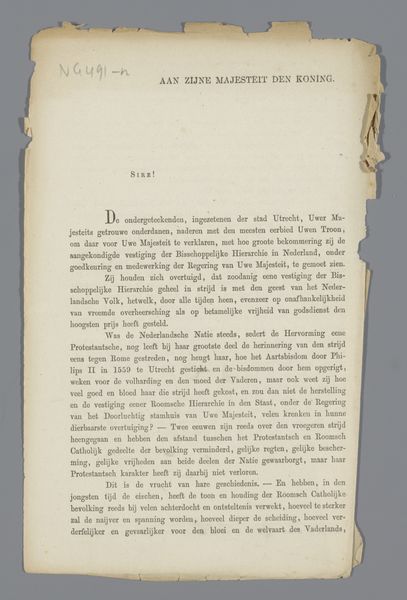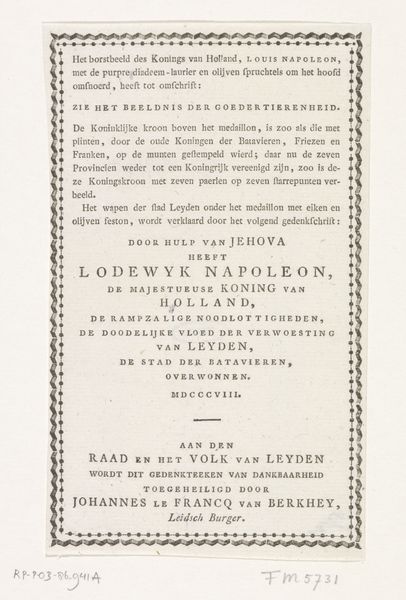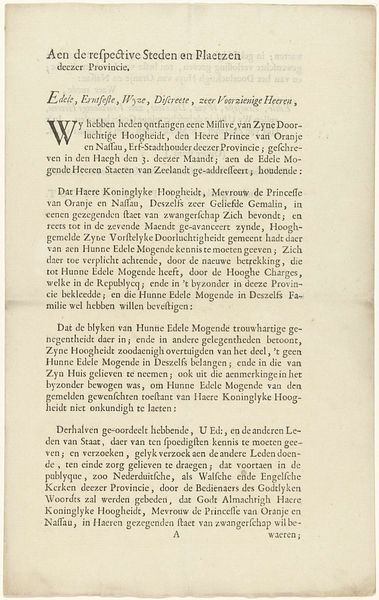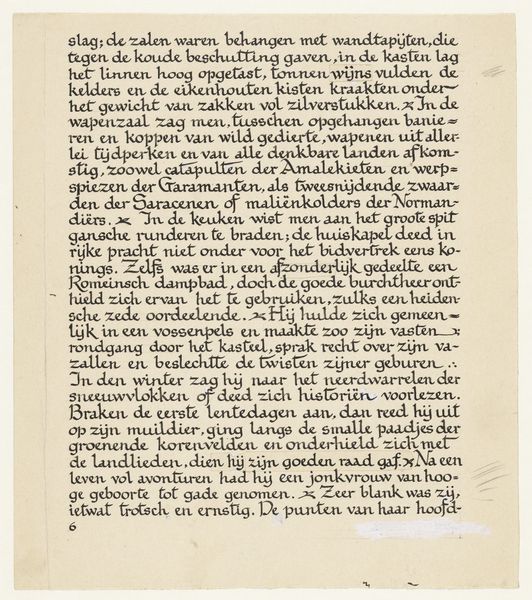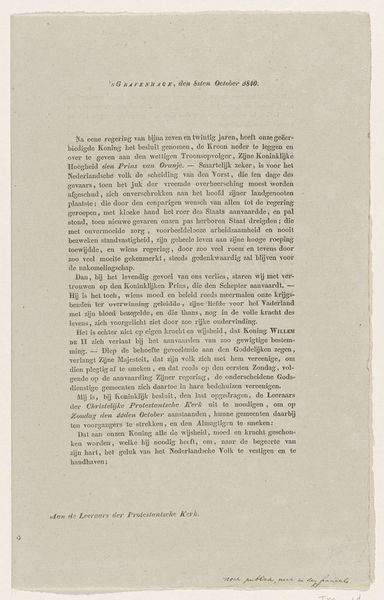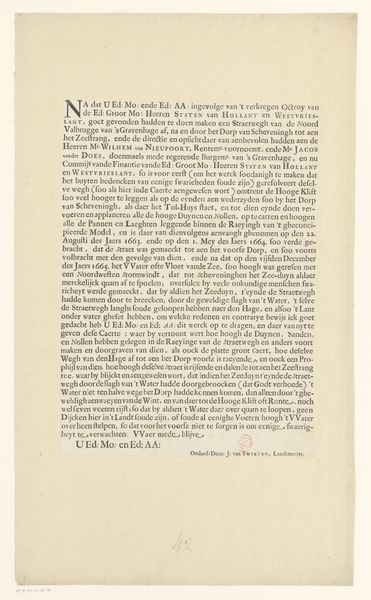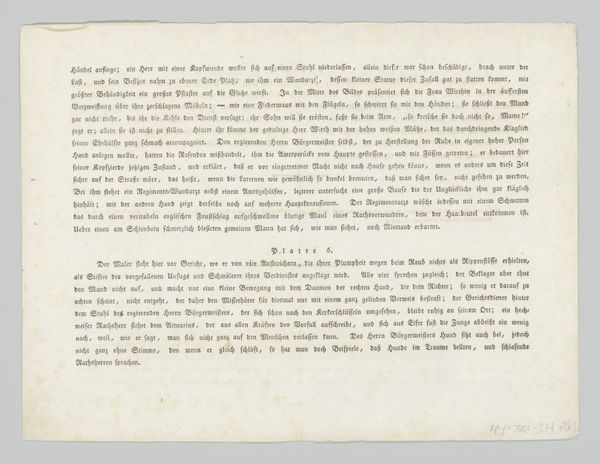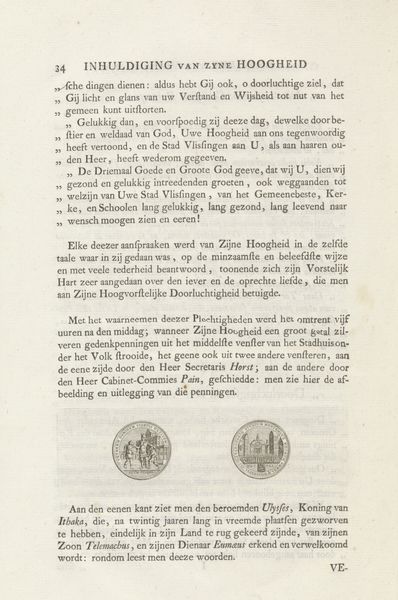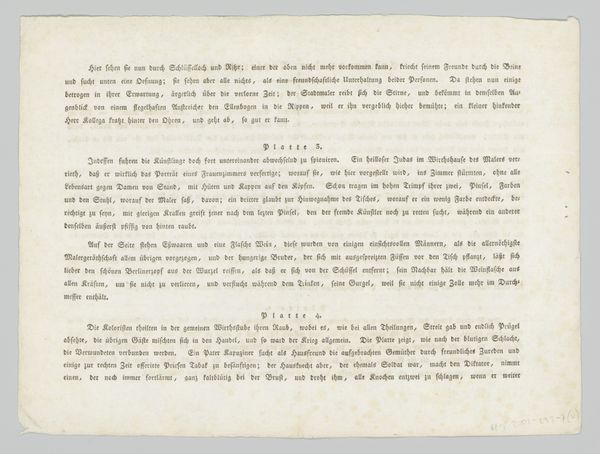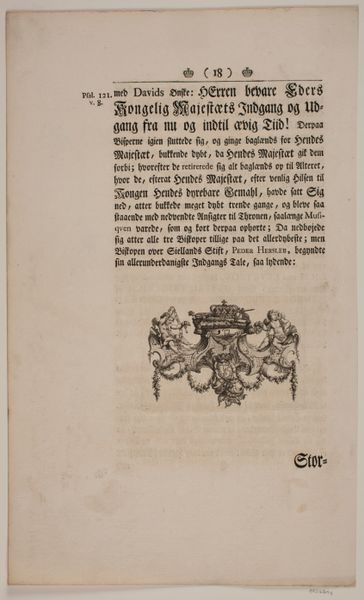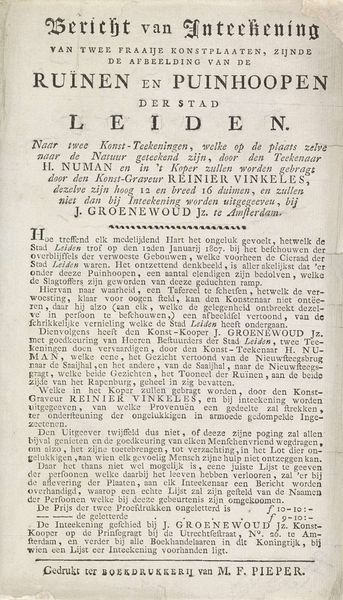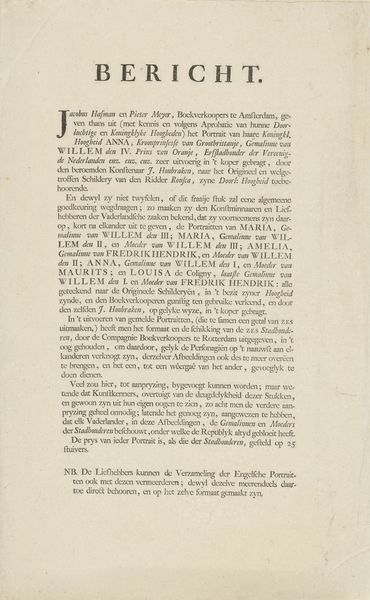
Copie van een Brief uyt 's Lands Vloot van 8 juni 1672 Possibly 1672 - 1678
0:00
0:00
michieladriaanszderuyter
Rijksmuseum
graphic-art, print, typography
#
script typeface
#
graphic-art
#
aged paper
# print
#
editorial typography
#
typography
#
fading type
#
stylized text
#
thick font
#
handwritten font
#
classical type
#
historical font
#
columned text
Dimensions: height 28.5 cm, width 17.8 cm
Copyright: Rijks Museum: Open Domain
Curator: Here at the Rijksmuseum, we have "Copie van een Brief uyt 's Lands Vloot van 8 juni 1672," possibly dating between 1672 and 1678. It’s a print, almost entirely typography, connected to Michiel Adriaansz. de Ruyter. Editor: My initial reaction? A wave of seriousness. The aged paper and dense, stylized text give it the gravity of an important historical document. Curator: Indeed. The typeface itself is fascinating—it's classical, but with this fading, almost handwritten quality. Note how the thick font used for emphasis underlines urgency. As a printed copy of an original letter, the piece really foregrounds questions about accessibility and dissemination of information. The very process of copying, printing, and distributing transforms this naval missive into a tangible form of public communication, revealing shifts in the ways news of the Dutch fleet was shared. Editor: The layout too – that dense, columned text – evokes a feeling of coded knowledge, available to those literate and privileged enough to access it. De Ruyter’s name, prominent at the bottom, isn’t just a signature, it's a brand almost; an appeal to the viewer to trust the content on display. This object, while ostensibly a mere “copy,” carries a weight of authority, designed to impress and reassure. Curator: Absolutely. The letter’s content, reporting on naval battles, reinforces the importance of its material form. The printer, Arnout Leers, likely produced it in response to popular demand. The printing house served as a mediator. What were the socio-economic conditions that enabled them to mass-produce and distribute printed information like this, and who was it for? It all shows the growing demand for information and awareness. Editor: You are right. As you describe it, I consider what this piece says about power and information. In its day, it wasn’t just about the words, but about owning and displaying access to them, isn’t it? De Ruyter would likely have seen this proliferation as serving his goals in the Anglo-Dutch war effort of 1672. Now I wonder if the 'copy' aspect subtly amplifies trust, by hinting widespread corroboration, by numerous trusted colleagues and state authorities? Curator: I've never considered that – quite a convincing possibility. I learned today, this object illuminates not just the events of the Anglo-Dutch war but also the mechanics of information itself. Editor: For me, it is how carefully constructed trust is on display here! Thank you, I noticed a new perspective today, on this artwork and its era.
Comments
No comments
Be the first to comment and join the conversation on the ultimate creative platform.
